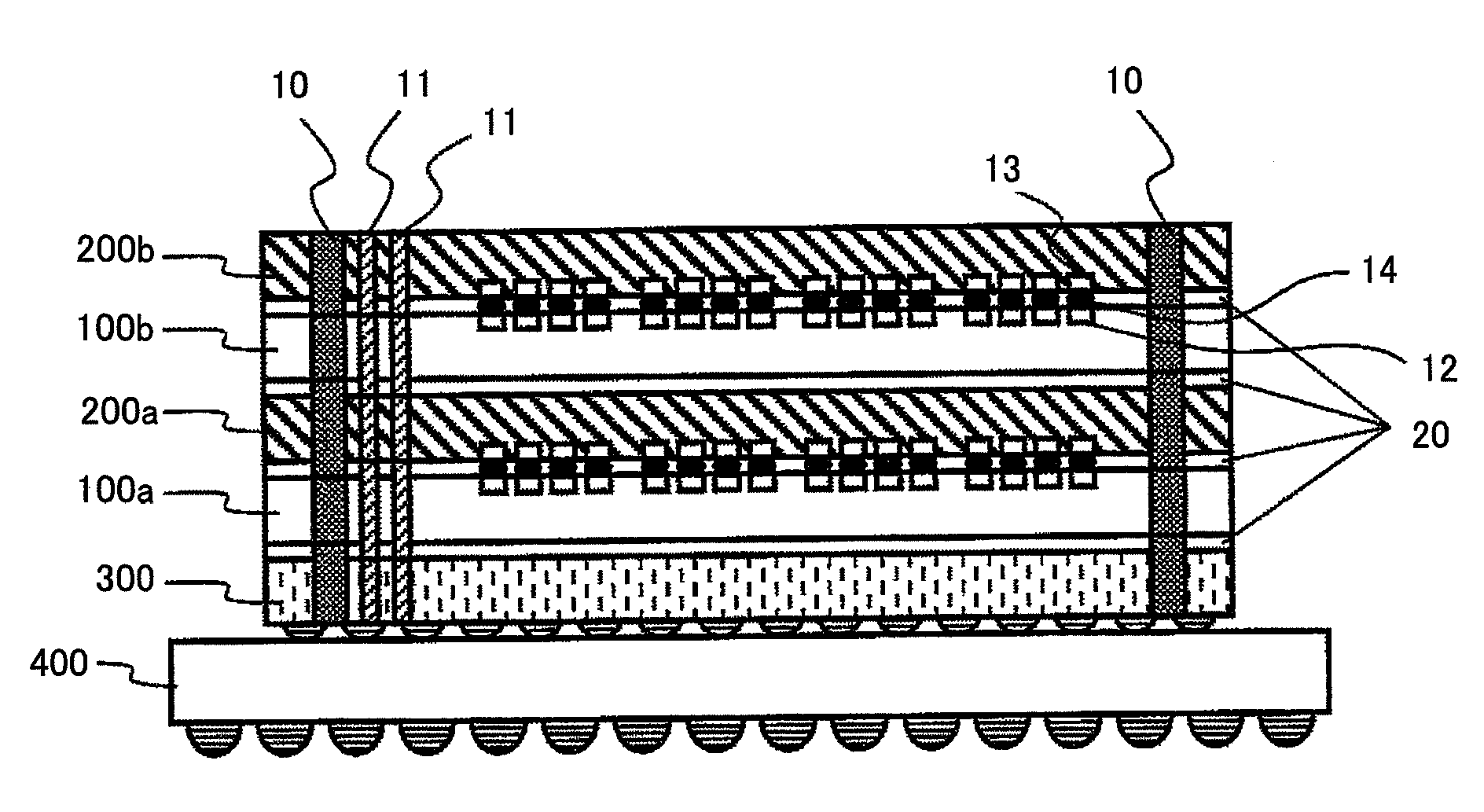Semiconductor device
a technology of semiconductor devices and semiconductors, applied in semiconductor devices, semiconductor/solid-state device details, instruments, etc., can solve the problems of increasing communication distance, reducing the power consumption and and the inability to find the means to solve these problems, so as to improve the speed performance of the entire system and reduce power consumption
- Summary
- Abstract
- Description
- Claims
- Application Information
AI Technical Summary
Benefits of technology
Problems solved by technology
Method used
Image
Examples
example 1
(Configuration)
[0068]FIG. 1 is a stack sectional view to show the semiconductor device relating to a first embodiment according to the present invention. In the present embodiment, a memory LSI 200 mounted with a memory for storing data and a processor LSI 100 mounted with an arithmetic unit are stacked in such a way that respective surfaces on which circuitry is disposed face each other. A pad 12 on the processor LSI 100 and a pad 13 on the memory LSI 200 are electrically connected with a solder bump 14. Two sets of combinations of such processor LSI 100 and memory LSI 200, that is, a combination of a processor LSI 100a and a memory LSI 200a and a combination of a processor LSI 100b and a memory LSI 200b are stacked. An interface LSI 300 is stacked in the underlying layer, and the entire structure is stacked on a package board 400. Further, the present embodiment includes a through silicon via for power supply 10 for providing power supply to each LSI and a through silicon via for ...
example 2
[0133]FIG. 10 is a stack sectional view of the semiconductor device relating a second embodiment of the present invention, in contrast with FIG. 1. In FIG. 10, like parts corresponding to those of FIG. 1 are given like reference characters and detailed description thereof will not be repeated. In FIG. 10, a stacked LSI system is configured such that a processor LSI 100a, a processor LSI 100b, and a processor LSI 100c are stacked respectively interposing a memory LSI 200a and a memory LSI 200b therebetween, and an interface LSI 300 and a package board 400 are stacked in the underlying layer of those stacked five LSIs. Moreover, in FIG. 10, the processor LSIs 100a, 100b and 100c are electrically connected with the memory LSIs 200a and 200b through a TSV block for memory access 18.
[0134]FIG. 11 shows the connection configuration between the processor LSIs 100a, 100b and 100c and the memory LSIs 200a and 200b in more detail. Through silicon vias 181a to 181c, 182a to 182c, 183a to 183c,...
PUM
 Login to View More
Login to View More Abstract
Description
Claims
Application Information
 Login to View More
Login to View More - R&D
- Intellectual Property
- Life Sciences
- Materials
- Tech Scout
- Unparalleled Data Quality
- Higher Quality Content
- 60% Fewer Hallucinations
Browse by: Latest US Patents, China's latest patents, Technical Efficacy Thesaurus, Application Domain, Technology Topic, Popular Technical Reports.
© 2025 PatSnap. All rights reserved.Legal|Privacy policy|Modern Slavery Act Transparency Statement|Sitemap|About US| Contact US: help@patsnap.com



